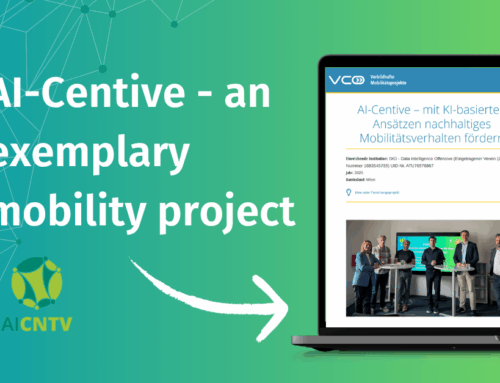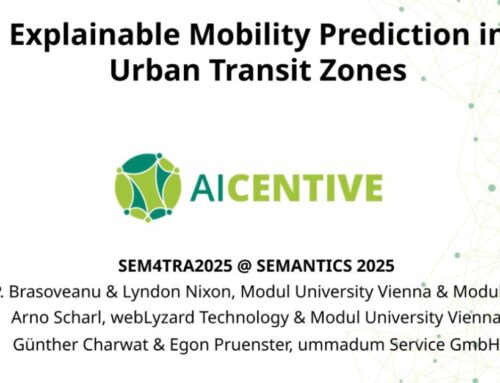The publication “Hybrid AI Models for Structured Mobility Prediction in Metropolitan Areas”, written by Adrian Braşoveanu, Lyndon Nixon and Arno Scharl and presented at the 18th International Work-Conference on Artificial Neural Networks, introduces hybrid AI models that enhance the prediction of urban mobility patterns, with a focus on the Vienna metropolitan area. Developed within the AI-CENTIVE project, the models aim to guide citizens toward greener transportation choices through intelligent forecasting and targeted incentivization.
Trained on commuter trip data from the Ummadum app, the AI models predict variables such as transport mode, time, origin, destination, distance, and duration. Based on these forecasts, the system can trigger personalized notifications encouraging users to choose more sustainable travel options.
For example, when the system predicts that a user is likely to drive to work during peak hours, the Ummadum app can proactively suggest taking public transport or carpooling instead—offering digital points that can later be exchanged for local rewards or discounts. This real-time feedback loop helps reduce emissions and congestion while making sustainable mobility choices more appealing in everyday life.
The research compares multiple AI architectures and finds that a graph convolutional network (GCN) combining statistical patterns with deep learning techniques achieves the highest predictive accuracy. This approach demonstrates the potential of hybrid AI systems to bridge traditional machine learning and modern neural methods for real-world mobility applications.
By leveraging AI to anticipate mobility behavior, AI-CENTIVE contributes to the development of data-driven solutions that promote sustainable transport and support climate goals.
The full paper is now available via the Weblyzard ePrints archive.




